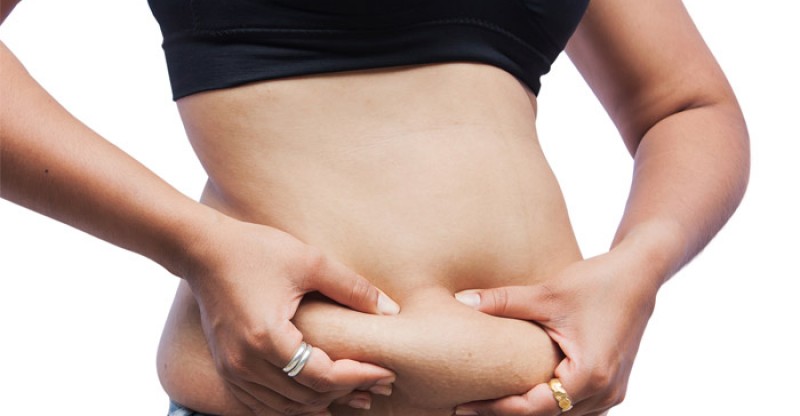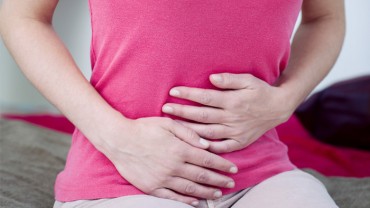Why Do People Get Fat?
Have you ever wondered why some people seem to be able to eat whatever they want without any change to their weight, while others are constantly dieting and still gaining weight?
Or have you ever thought about what it is that makes us gain weight as we get older?
With the amazing advances in science in the last century, we now have a lot more information about what is happening in the body when we eat food and store fat, and yet there is still so much we don’t know.
Luckily, we do have enough information to understand our individual bodies and attain the best level of health for each of us.
Millions of people start diets every year, and yet almost all of these people won’t succeed with their weight loss goals.
While there are so many factors we can blame for our diet backsliding, we can also choose to focus on the facts and look at how to engineer our lifestyles to achieve our goals.
Here we take a closer look at the science behind fat gain and body shape in order to better understand our bodies and what we can do to change our look and our health.
Major Body Shapes
Starting our journey to understanding our bodies and better health begins with learning about and recognizing the 4 major body shapes that occur in people with excess fat storage.
Weight gain doesn’t occur in the same way for all people, and it doesn’t result in the same fat distribution and body shape when the weight gain occurs.
You may have already identified your own general body shape, or have at least noticed the fact that overweight people tend to carry weight in different places of the body and as a result have different body shapes.
You may have heard terms such as ‘apple’-shaped or ‘pear’-shaped in reference to body shapes, however there are more technical terms we can use to identify body shapes.
There are two major body shapes that we can divide most people into – ‘android’ which resembles a straight, up and down shape that most males have, and ‘gynoid’ which is a more shapely, hour glass body shape that resembles the shape many women have.
In lean people with low fat storage, most body shapes can be generally grouped into these two categories.
However, when excess fat storage takes place we can group the emergent body shapes into 4 categories, as listed below.
Keep in mind of course that not everyone will fit securely into just one of these groups.
It’s certainly possible to fall between two of these different categories if you share the characteristics of both of them.
Even Distribution
In this fat distribution body type, the fat is stored evenly around the body, without an obvious area where fat storage is concentrated.
This body shape is the one most often seen in plus sized models.
The excess fat is more pleasingly evenly distributed giving the body a more proportional look.
Also some individuals who even look ‘slim’ may have this type of fat distribution, particularly if they don’t have a lot of lean body mass (muscle) to build up their body shape.
This can become dangerous to health as many people, especially teenagers and young adults, strive for a slim body regardless of the composition of their body.
For example, even someone who has a healthy weight may have a high body fat percentage, because their muscles are so undeveloped and their muscle stores are so low.
Without realizing it, despite their small size, a person with this body type has an unhealthy body.
This results in a mostly ‘fat and bones’ body that lacks strength and is more disposed to lifestyle related diseases such as diabetes, despite the fact their weight is in the healthy range.
Android Obesity
Android obesity is the type of obese body type most often shown by men, however many women can also present with this body type in obesity.
Android obesity is characterized by a predominance of fat storage in the upper body, trunk and abdominal area, with a low or normal degree of fat storage in the lower body, hips, buttocks and legs.
This gives rise to the characteristic ‘apple’-shape of the overweight man.
Android obesity is influenced by male hormones which cause the fat to be mostly stored in the upper body, however women, especially those whose female hormones have dropped after menopause are more at risk of developing an android obesity body shape.
Android obesity can be dangerous as fat in the upper part of the body is closer to vital organs such as the liver, kidneys and intestines, and this can cause a wide range of health effects.
Android obesity can also cause back, neck and hip problems, due to the strain that carrying a large amount of excess weight in the upper body can cause.
Gynoid Obesity
Gynoid obesity is most often associated with women, as it is the type of obesity that causes excess fat to be more preferentially stored in the hips, buttocks and thighs.
Of course men can also experience this kind of obesity, depending on the mix of hormones in their bodies.
Once again, gynoid obesity is determined by female hormones, which encourage fat to be stored on the hips buttocks and thighs.
This kind of body shape is commonly referred to as ‘pear’-shape or in cases where there is less fat storage, ‘hourglass’-shape.
Those who have gynoid obesity may have low levels of fat storage in areas of the upper body, such as around the waist and on the arms.
Although some people may not like the look of excess fat being stored on the hips, buttocks and thighs, it is certainly healthier than having most of your weight centered around the midsection and abdominal area, because fat that is stored on the lower body doesn’t interact with the vital organs so much.
This weight does still contribute to a higher body weight overall however, and can result in putting more pressure on the knee and hip joints, leading to osteoarthritis over a period of time.
The other disadvantage of fat that is stored in the lower body is that it is ‘stubborn fat’, that is fat that is very hard to lose when you start a weight loss program.
This can result in the frustration that many women feel when they may see their male counterparts lose a lot more weight more quickly when doing the same sort of things to lose weight.
Abdominal Obesity
Abdominal obesity can occur in both men and women, however it is more common in younger men than in younger women.
The tendency to store abdominal fat increases with age in both men and women, and can even occur in people who have an otherwise normal or healthy body fat distribution.
Abdominal obesity is by far the most dangerous and risky kind of fat storage.
When fat is stored around the midsection, waist circumference increases.
In this case fat can be stored subcutaneously (that is just under the skin) which may be more common in the android obesity body type, or it can be stored deeper in the abdominal cavity around the vital organs such as the kidneys, liver and intestines.
Abdominal obesity can be present in a person even if they have a low level of fat throughout the rest of the body.
Abdominal obesity places you at a much increased risk of heart disease, diabetes, fatty liver disease, and high blood pressure.
Because abdominal obesity means fat is stored much closer to your vital organs, this fat can more easily accumulate in your organs producing a phenomenon of lipotoxicity.
Abdominal obesity can be more easily reduced with a healthy eating and exercise program than gynoid obesity, and so efforts should be made to reduce abdominal obesity in order to limit the risk to health.
Body Shape and Health Risk
Because different body shapes have different implications for health risk, being overweight doesn’t necessarily mean you have a greater risk of developing a health condition.
Without a doubt, abdominal obesity and the android obesity body types have a much greater risk of health complications, due to the majority of their weight being stored in the midsection where it could build up around the internal organs.
Stored fat is not just an inert substance.
Stored fat has a profound effect on our bodies, in that it can break down and enter the bloodstream, accumulate in our organs, and it also releases chemicals and hormones of its own that affect how our bodies work.
The even fat distribution body type tends to be of lower risk to health, because the stored fat cells are spread throughout the body in an even way, so that the effects of the stored fat are spread out over a larger area.
Although being overweight with this body type may not be good for your health and you may have greater health risks as a result of being overweight generally, the even fat distribution body shape is not as hazardous as other body shapes.
Over the past decade or so, most conventional wisdom and scientific evidence has shown us that the ‘apple’ body shape is worse for health than the ‘pear’ body shape, posing an increased risk of heart disease, diabetes, high blood pressure and other lifestyle diseases.
However, recent research has revealed that the risk difference between the apple and pear body shapes might not be as significant as first thought, with a significantly increased risk of metabolic syndrome being attributed to the ‘pear’ body shape based on a new study.
Nevertheless, the android body shape obesity and abdominal obesity have long been shown to be the highest risk body shapes for heath conditions and health complications.
Abdominal obesity and android body shape obesity are characterized by the ‘apple’ body shape, and have the potential to increase the risk of a variety of health conditions including diabetes, heart disease, high blood pressure, metabolic syndrome and even some kinds of cancer.
In the case of android shape and abdominal obesity, the risk is greater due to the accumulation of body fat around the mid-section, and the proximity of this biologically active fat to the vital internal organs including the heart, liver, kidneys and intestines.
Scientists believe that fat accumulated around the organs interferes with the organ’s functions and places more stress on them, leading to disease states like diabetes and high blood pressure.
There is also the possibility that fat accumulated around the midsection can result in a higher amount of free fatty acids circulating in the blood, creating a condition known as lipotoxicity.
In lipotoxicity, excess fats build up inside the organs and change the physical and biochemical functioning of the organs.
While all kinds of obesity can have negative effects on our health, most of the evidence points to abdominal obesity and android type obesity as being the most dangerous and risky to our health.
Obesity Factors
Why does it seem like some people find it easy to stay slim and lithe, while others are constantly fighting the battle of the bulge to seemingly little avail?
Science has come up with more than a few answers to this question, that go deeper and beyond the answer of simply ‘a faster metabolism’.
Evidence has been found for the fact it is easier for some to gain weight, while conversely it’s also easier for some to lose weight. Let’s take a look at some of the scientifically backed causes of weight gain and body type.
Genetics
There’s no doubt that genetics play into your body shape and ability to gain weight, with some evidence estimating that up to 80% of body shape is determined by genetics.
However, this doesn’t necessarily mean that you will end up with your mother’s or father’s exact body shape.
Environment also plays a big role in how different aspects of our genes are activated and expressed.
More recent research has shown that genetics is more closely tied to different aspects of our body shape.
For example, the ease with which you develop muscle is closely tied to your genetics, meaning that if your genetics predispose you to it, you can develop more muscle more quickly, with less exercise.
However, genetics may not get to determine the total amount of muscle mass you develop – that could depend on the work you put in.
Scientists have also found that whether you end up with the android ‘apple’ body shape, or the gynoid ‘pear’ body shape may depend on your genetics.
In recent research, scientists have identified the Plexin D1 gene as the culprit that determines whether you’re more likely to gather excess fat around the middle or the hips.
While these genetic factors are not in our control, many other aspects of our lives that affect our genes and bodies are within our control, and it’s important to focus on what we can control and improve to better manage our health.
Biology
As much as genetics determines your body shape, your biology can do that, too.
A clear example of this is the fact that women are more likely to have the gynoid body shape, whereas men are more likely to have the android body shape, or abdominal obesity.
This is a case of hormones at work – if you have a predominance of female sex hormones you are more likely to have gynoid ‘pear’ body shape, whereas if you have a predominance of the male sex hormones you are more likely to have an android ‘apple’ body shape.
While as a female, you are more likely to have a gynoid body shape, some females actually have a higher than usual level of male hormones, causing them to have an android body shape, and the reverse can also happen to men.
Other biological aspects can also make a difference to body shape, muscle mass and fat distribution, including race, and clear examples of this can be seen in the fact that the idea of an ‘ideal body shape’ differs between countries.
Biology is another body shape moderating factor that we have little to no control over, so while it’s useful to be aware of biological determinants of body shape, it’s important to focus our energy on factors we can change, like lifestyle.
Lifestyle
Lifestyle is one of the most important determinants of body shape that we have control over.
Lifestyle refers to the way we live our lives; what food we eat, how much exercise we do, how we spend our work and leisure time.
One of the most important determinants of body shape and size, having been proven by science and many people’s personal experience is food intake and dietary choices.
When it comes to controlling body shape, using our diet and exercise regime is the best way to improve our body shape in terms of appearance, and also for health outcomes.
Reducing total calorie intake is one of the most important factors for reducing weight and limiting obesity.
Other important considerations include the macronutrient proportions of the diet (that is, carbohydrates, protein and fat) and also micronutrient content (vitamins and minerals).
Exercise is another important aspect of lifestyle that can dramatically affect body shape.
Exercise can help to burn calories, use up excess fat stores and build muscle mass which over time can really change body shape with an appropriate amount of effort.
Age
Age is another one of the factors of body shape that we can’t really control – no matter what we do we will continue to age.
As we age, our bodies change, in terms of the level of functioning, athletic ability, metabolism and hormone function.
One of the most distinct changes that occurs with age is the effect and level of hormones that are within our body.
As women go through menopause, their levels of the female sex hormones decrease and levels of male hormones increase, making post-menopausal women more likely to develop an ‘apple’ android body shape with age and an increase in abdominal obesity.
This can obviously pose health risks for post-menopausal women who face a greater chance of developing diabetes, heart disease or high blood pressure as a result of increased waist circumference.
The same thing can happen in aging men – blood testosterone levels decrease and female hormones can take more of a dominant role.
This can result in a greater deposition of fat than previously, and the development of some breast tissue can occur.
Hormone replacement therapy can help in both cases, along with a healthy lifestyle.
Managing Body Shape and Weight Gain
Identifying whether or not you are obese, and pinpointing what your body shape is can be very useful in determining your health risk.
It can also be helpful in determining the best ways to approach weight loss for your individual needs.
Android ‘apple’ and abdominal obesity shapes are more likely to be seen in overweight or obese men or postmenopausal women, and can indicate the greatest risk to health of any of the body shapes.
The gynoid ‘pear’ body shape is most common among pre-menopausal women, and in the obese person, this body shape may indicate a slightly increased health risk than in a healthy weight person.
The even fat distribution body shape can be commonly seen in underweight, healthy weight and slight overweight men and women, and doesn’t carry any significant increase in health risk.
However, as body fat percentage rises in general, there is always a greater risk of chronic and lifestyle related diseases arising.
While age, genetics and biology, especially hormones, all play a significant role in determining our body shape, these factors cannot be controlled for the most part.
Age, genetics and biology can also determine how easy or difficult it is for you to lose weight, however there is unfortunately nothing we can do about this.
The best action we can take towards improving chronic disease risk and boosting quality of life is maintaining a healthy weight and body fat percentage through a healthy diet with plenty of whole grains, lean protein, fruits and vegetables, and a regular exercise routine.
FDA Compliance
The information on this website has not been evaluated by the Food & Drug Administration or any other medical body. We do not aim to diagnose, treat, cure or prevent any illness or disease. Information is shared for educational purposes only. You must consult your doctor before acting on any content on this website, especially if you are pregnant, nursing, taking medication, or have a medical condition.
HOW WOULD YOU RATE THIS ARTICLE?







To eat less but healthy food, to train your body, no stress will help not to get fat! dont you think so?